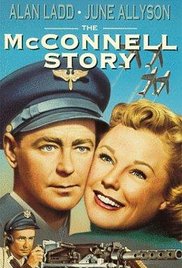“King
Rat” was the first novel by James Clavell.
It is set in the Changi Prison Camp in Singapore in WWII. The camp holds British, Canadians,
Australians, and a few Americans.
Clavell had been a prisoner in the camp and the Peter Marlowe character
is based on him. The book was published
in 1962. The movie was released in 1965
and was directed by Bryan Forbes. Forbes
wrote the screenplay with Clavell. Earlier I reviewed the movie and now I am comparing the movie to the novel.
The
movie is about survival in a Japanese prison camp. The main character is an American corporal
named King (George Segal) who is not just surviving like most of the enlisted
men, but is actually thriving because he is a talented black marketeer and
amoral. He is well-dressed and well-fed
and has a gang of Americans in his hut on his payroll. Everyone calls him “the King”. He also has bribed several of the camp leaders
to look the other way. His nemesis is
the Provost Marshall Lt. Grey (Tom Courtenay).
Grey is a lower class Brit that is obsessed with catching King breaking
the camp rules against profiting while others are suffering. The movie becomes something of a buddy film
when King strikes up a relationship with an upper class RAF pilot named Marlowe
(James Fox). Marlowe agrees to act as
King’s interpreter in his deals with the guards since he speaks Malay. He is unlike King’s other toadies because he
is not interested in the largesse that King shares with them. He is instead attracted to the charismatic
King and intrigued by his “every man for himself” philosophy. The two develop a friendship as Marlowe is
corrupted by the unadulterated American capitalism of King. King is intrigued by a man who is not
interested in his money and has an upper class sheen to him. At one point he even saves Marlowe’s life,
although it is unclear what his motives are.
Meanwhile, Grey is in hot pursuit of both of them and the Japanese are
hunting for clandestine radios. We also
learn that while King uses his talents to his advantage, some of the British
Majors and Colonels are using their status to their advantage.
The
movie tracks the book very closely and much of the dialogue in the book appears
in the film. All the characters in the
movie appear in the book and the roles are untampered with. All of the major incidents in the movie are
straight from the novel. Nothing
significant was added in the movie.
Naturally the novel has some subplots and characters that the movie does
not include partly because of time constraints.
For instance, the book has a subplot involving a friend of Marlowe’s
named Sean who has found his calling as a transvestite actor in the camp plays. He comes to believe that he is a girl. (I wonder why that subplot was left out of
the movie. lol) Also, in the book, King and Marlowe sneak out
of the camp and visit a local village to conduct some business. There are even some women involved. (The movie does not have a single woman in
it.)
The
book differs from the movie mainly in depth.
The movie confines itself mainly to the King character and Marlowe’s
reactions to him. Although the movie
delves into whether King has any redeeming virtues, he is more
multi-dimensional in the book. The friendship
is much more developed in the book.
There is a strong bond between the two.
In the book it is clearer that King saves Marlowe’s life because he
cares for him. The book is also less
enigmatic about the effects King has on Marlowe. There is a key passage in the book where
Marlowe justifies to himself making a profit on a solo deal.
The
novel spends more time highlighting the social distinctions within the camp in
general and the British army in particular.
Grey despises Marlowe because of who he is more than who he is
associated with. He is embittered by
England’s rigid class structure. The
novel also has the luxury to spend more time focusing in on the corruption of
the brass. It seems clear that Clavell
knew someone like King when he was a prisoner.
But it is also clear that he had some anger towards the upper
officers. Both the movie and the book
ask the question whether King or the brass were more evil. It could be argued that the hypocrisy of the
camp leadership made them more loathsome.
One thing you can say about King, he did not hide his avarice. Another aspect that the book pushes is the
difference between American culture and British culture. Clavell’s King represents American capitalism
at its worst. Or best. If you are a Republican, King is a hero.
My
theory is that a movie should be better than the book it is based on. The movie makers have the advantage of making
improvements on the source material. In
this case, it is not clear that the movie is an improvement. What we have is the symbiotic relationship
that can exist between a movie and its source material. The movie does not have the time or
desire to cover all of the themes in the book.
What the screenwriter retains is very close to the book and seeing a
stellar cast bring life to the characters is neat. “King Rat” works best if you watch the movie
first and not vice versa. The book fills
in some of the gaps and explains little details that might go unnoticed in the
film. For instance, you learn why the
doctor seems too rude towards his aide.
In
conclusion, in this case I will say that the book is superior to the
movie. The reason for this opinion is
you get the plot and characters from the movie plus more. More is usually better.
BOOK
= B
MOVIE = B-






.jpg)



